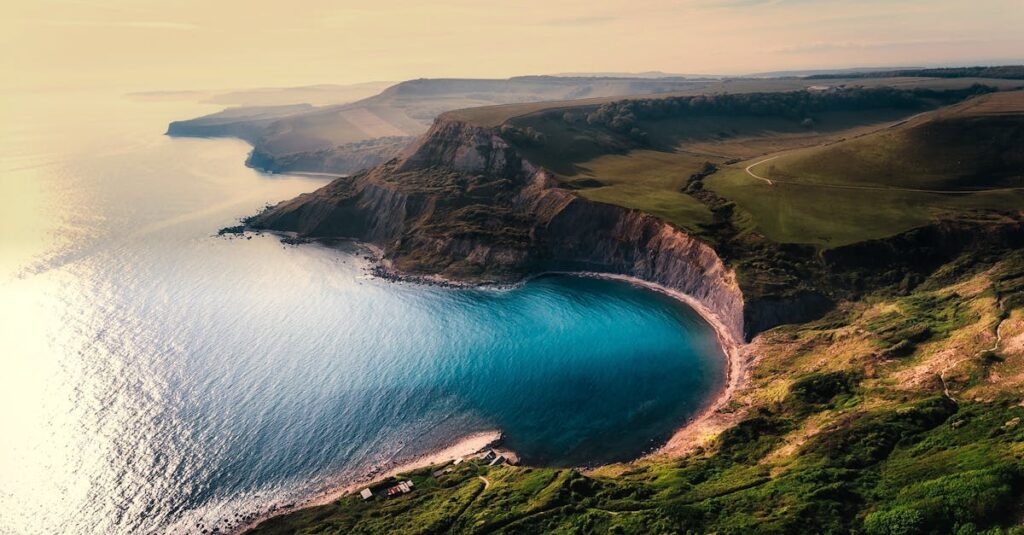Nestled along the picturesque shores of San Diego, California, La Jolla Cove is a renowned destination for scuba divers seeking an intimate encounter with the Pacific Ocean’s wonders. This small, crescent-shaped beach, framed by dramatic cliffs and lapped by turquoise waters, offers more than just scenic beauty—it’s a gateway to an underwater playground teeming with marine life and natural splendor. Whether you’re a seasoned diver or a curious beginner, here’s what you need to know about diving in La Jolla Cove, from entry and exit points to conditions, marine species, and what to expect beneath the waves.
How to Enter and Exit the Water at La Jolla Cove
La Jolla Cove’s entry point is as straightforward as it is charming. Divers typically enter the water directly from the beach, a sandy stretch that slopes gently into the ocean. The entry is relatively easy, especially during calm conditions, as there’s no need to contend with rocky outcrops or heavy surf. Wetsuits, fins, and masks in hand, you’ll wade into the shallow waters before submerging into the depths.
Exiting can be slightly trickier depending on the swell. The same beach serves as your exit point, but waves can pick up throughout the day, making timing your return important. Watch for breaks between sets to avoid getting tumbled by incoming surf. The Cove’s small size means you’re never far from shore, and a set of stairs leads from the beach back up to the parking area or grassy park above, where you can rinse off gear at public showers. Pro tip: Arrive early to secure parking and gear up without the midday crowds.

Dive Conditions at La Jolla Cove: Temperature, Visibility, and Tides
La Jolla Cove benefits from its protected status within the La Jolla Underwater Park Ecological Reserve, which helps maintain its pristine conditions. Water temperatures range from the mid-50s°F (13°C) in winter to the upper 60s°F (18-20°C) in summer, so a 7mm wetsuit is standard year-round for comfort. Visibility varies widely, averaging 10–30 feet (3–9 meters), though it can exceed 40 feet (12 meters) on clear days, especially in late summer and fall when the water settles.
The Cove is sheltered from heavy winds by its cliffs, keeping surface conditions calmer than other exposed coastal spots. However, swells and currents can still influence your dive, particularly near the outer edges of the cove where the kelp forest begins. Check local tide charts and dive reports—low tide often means less surge, while high tide can stir up sand and reduce visibility. Dive with a buddy, and if you’re new to the area, consider joining a guided group to get the lay of the underwater land.
Marine Life in La Jolla Cove: A Vibrant and Playful Ecosystem
What truly sets La Jolla Cove apart is its thriving marine ecosystem. The towering kelp forests, swaying like underwater cathedrals, are home to a dazzling array of sea creatures. Look for the bright orange Garibaldi, California’s state marine fish, darting among the fronds. Schools of silvery sardines and anchovies shimmer overhead, while leopard sharks—harmless and graceful—glide along the sandy bottom, especially in warmer months.
Sea lions are the Cove’s charismatic stars, often spotted lounging on nearby rocks or playfully swimming alongside divers. You might also encounter horn sharks, lobsters peeking from crevices, and the occasional octopus camouflaged against the rocks. For the lucky, a glimpse of a dolphin pod or a migrating gray whale (in winter) adds an extra thrill. The ecological reserve status limits fishing, ensuring this biodiversity remains robust and undisturbed.

What to Expect: Dive Profiles and Terrain at La Jolla Cove
La Jolla Cove offers a dive experience that’s accessible yet endlessly rewarding. Depths range from 10 to 40 feet (3–12 meters) within the immediate cove, making it ideal for beginners, while more experienced divers can venture farther out toward the kelp beds or the nearby La Jolla Caves, where depths drop to 60 feet (18 meters) or more. The terrain is a mix of sandy flats, rocky reefs, and kelp-strewn expanses, offering varied scenery in a compact area.
Expect a relaxed pace—this isn’t a high-adrenaline drift dive but a chance to soak in the surroundings. Navigation is simple thanks to the cove’s natural boundaries, though a compass is handy if you explore beyond the kelp. Surface intervals are a treat, with the chance to snack on the grassy bluff overlooking the water or watch sea lions basking on the rocks. One thing to prepare for: the Cove’s popularity. Summer weekends draw snorkelers, swimmers, and divers alike, so the water can feel busy. Midweek or early morning dives offer more solitude. Bring your own gear or rent from nearby shops like La Jolla Dive, and don’t forget a dive flag—local regulations require it.
Final Thoughts: Why La Jolla Cove Is a Must-Dive Spot in San Diego
Scuba diving in La Jolla Cove is a quintessential Southern California experience, blending ease of access with the raw beauty of the Pacific. From the gentle entry off the beach to the mesmerizing dance of kelp and marine life, it’s a dive that invites you to slow down and marvel at nature’s underwater artistry. Whether you’re chasing sea lions or simply floating through the forest of amber kelp, La Jolla Cove delivers a dive that’s as memorable as the coastal cliffs framing it. So, gear up, take the plunge, and let the Cove reveal its secrets—one bubble at a time.

